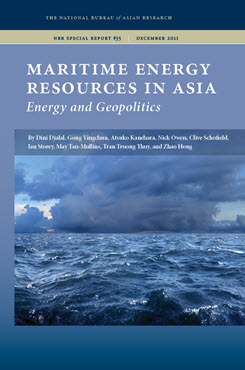The Development and Current Status of Maritime Disputes in the East China Sea
This essay examines the historical context, current developments, and future perspectives of the Sino-Japanese maritime disputes in the East China Sea.
EXECUTIVE SUMMARY
This essay examines the historical context, current developments, and future perspectives of the Sino-Japanese maritime disputes in the East China Sea.
MAIN ARGUMENT
Sino-Japanese maritime disputes in the East China Sea concern two issues: the territorial sovereignty of the Diaoyu Islands (called the Senkaku Islands in Japanese) and maritime delimitation. The sovereignty dispute over the Diaoyu Islands has always been a key factor in negotiations on East China Sea issues. If this dispute can be disentangled from the maritime delimitation issue through an agreement to exclude the Diaoyu Islands as a basis for generating exclusive economic zones (EEZ) or continental shelf claims, then the maritime delimitation issue might be handled more easily, since most confrontations and reciprocal distrust to date are rooted in the sovereignty dispute. A resolution to the delimitation issue will likely take the form of joint development of the East China Sea, further negotiations, or a judicial settlement. The 2008 China-Japan Principled Consensus on the East China Sea issue is a major step toward cooperation on maritime energy resources, but further compromise is required. If China and Japan cannot reach a consensus on the scope of the disputed waters, a judicial settlement may provide another option for settling disputes.
POLICY IMPLICATIONS
- If Japan insists on the unrealistic stance that no sovereignty dispute exists concerning the Diaoyu Islands, the East China Sea issues will remain unresolved and the confrontations over the sovereignty of the islands will very likely escalate.
- China and Japan should agree to exclude the Diaoyu Islands as a basis for generating EEZ or continental shelf claims in order to facilitate a resolution of the maritime delimitation issue.
- If both countries effectively promote the 2008 principled consensus, then the establishment of joint development zones near the Diaoyu Islands could accelerate the process of cooperation.
- The two countries need to be flexible on the method of dispute settlement. A clearly delimited maritime boundary reached through a judicial settlement or further sincere negotiations would encourage Sino-Japanese cooperation in scientific research, environmental protection, and other issues in the East China Sea.


